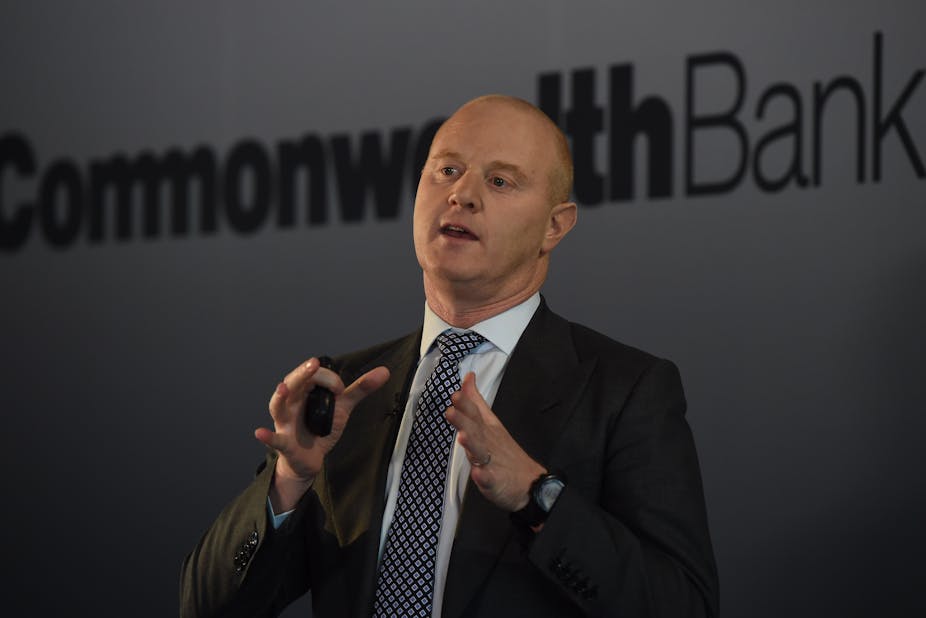Excesses of CEO pay make headlines during annual company reporting season, particularly at a time where pay increases for the general population have been fairly static. Yet CEO pay levels in Australia have yet to reach the astronomical “eye-popping” levels experienced in the United States.
While CNN has identified 15 CEOs who are picking up salaries between $156 million and $40 million, here in Australia, our outrage is unlikely to prevent any CEO pay increases being turned back by shareholders using the “two-strike” rule. We are a pretty tolerant lot. Expect however there to be some discussions regarding income inequity.
CEO Ian Narev earned $8.32 million in the 2015 financial year, an increase of nearly 5%. Or as the Herald-Sun (pay-walled) puts it, Narev earned double the average annual Australian wage every week over the past year.
Departing Woolworths CEO, Grant O’Brien’s very generous package has already featured in media reporting - O’Brien doesn’t formally finish until July 2016, enabling him to access his defined benefit superannuation entitlement of a percentage of his $2.35 million base salary for the rest of his life.
And although former Telstra CEO David Thodey stepped down on 30 April, Telstra’s annual report revealed his base salary as $2.65 million, plus a short term cash bonus of $3.4 million and $7.5 million in long term bonuses linked to share price. Fairfax reports this as 163 times the average full time earnings for a worker in that sector.
Thodey doesn’t attempt to justify his salary – on retiring he stated “there’s a real issue with income disparity”. Australia Post CEO Ahmed Fahour is another highly paid executive - in 2014, his $4.6 million pay packet was criticised amid large scale redundancies taking place at Australia Post.
In 2014, there were slightly fewer than 100 CEOs earning $3 million or more, which is 88 times more than the minimum wage and 38 times the average full time earnings. David Gyngell from Nine Entertainment led the pack at $19.5 million. Fellow media CEO Robert Thompson from News Corporation came in third with a package of $13.2 million.
But consider the other end of the scale. In Australia the minimum wage is currently $17.29 per hour or approximately $34,000 per annum. The full time adult average weekly total earnings are around $1500 or approximately $78,000 per annum.
As John Wright pointed out last year, Australians have a greater degree of tolerance for CEO pay inequity than do those in the United States, France, Germany and Japan. (Interestingly the US Securities and Exchange Commission in August is about to introduce a requirement that companies start disclosing the pay gap between their top executive and workers, in response to the Dodd-Frank reforms.)
Partly that is because Australians grossly underestimate CEO pay levels. Notwithstanding, Australian tolerance may be because pay inequity is less extreme in Australia than in the US, where the CEO-to-worker compensation ratio has bloomed from 20-to-1 in 1965 to 303-to-1 in 2014. (It peaked at 376-to-1 in 2000).
Transparency of CEO pay has been tackled by “Say on Pay” (SoP) rules, giving shareholders the right to have a say on executive pay have been adopted in non-binding and binding formats in countries including the UK, US, Belgium, the Netherlands, Norway, and Denmark. In 2011, Australia adopted a binding “Say on Pay” rule. This gives shareholders the right to vote for or against executives’ remuneration packages.
If at two consecutive meetings over 25% of shareholders vote against the remuneration packages, there is a “spill” of directors who have to stand for election again in 90 days – the so-called “two-strike” rule. Writing in The Conversation in 2013 Julie Walker pointed to evidence elsewhere that companies with a first strike improved their pay-performance linkages.
Ricardo Correa and Ugur Lel’s 2013 analysis of SoP laws with 100,000 firm-year observations over 39 countries found:
SoP laws are associated with 1) a lower level of CEO compensation, which partly results from lower CEO compensation growth rates and is related to CEO power, 2) a higher pay for performance sensitivity suggesting that SoP laws have the greatest effects on firms with poor performance, 3) a lower portion of total top management pay awarded to CEOs indicating lower pay inequality among top managers and 4) a higher firm value, which is related to whether the CEO’s share of total top management pay was relatively high before the laws are passed.
Rejection of bonuses (or donating them to worthy causes) may ease some of the embarrassment of CEO pay but there are other more practical ways of addressing income disparity.
In April 2015, Dan Price, co-owner of Gravity Payments in Seattle, US, announced he would take a personal pay cut (from his million dollar salary), reduce company profits at Gravity Payments and use these funds to increase the company’s minimum wage to $70,000 per annum over three years.
His move was met with praise and scepticism. In the three months since the announcement, Gravity Payments has seen a variety of unanticipated (by Price) consequences: customers have left claiming his move was political or socialistic or because they feared he would ultimately increase his charges to users (apparently most have since been attracted back).
Valued staff have left as their margins for skill and experience evaporated; his company’s co-founding brother sued; the attention led to an influx of emails, phone calls and media requests which required the hiring of new staff to expedite. He did however gain some new business - and a heap of job enquiries (and apparently some marriage proposals).
In the remaining days of the current company reporting season here in Australia, be braced for the usual outrage over executive pay. Expect this to be tempered by the occasional CEO declining their entitled performance pay as they alleviate their embarrassment of riches. But don’t expect to see a rush of CEOs taking pay cuts to reduce income disparity in their organisation.

